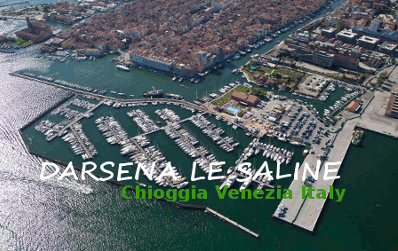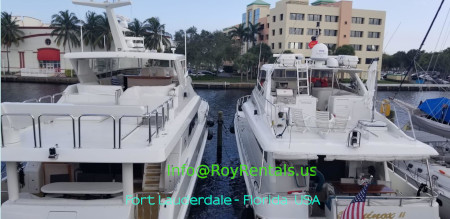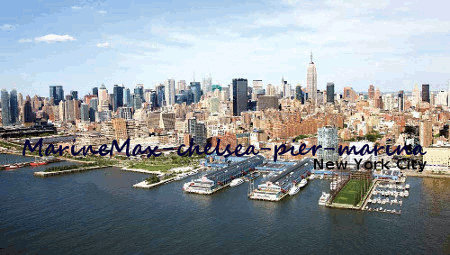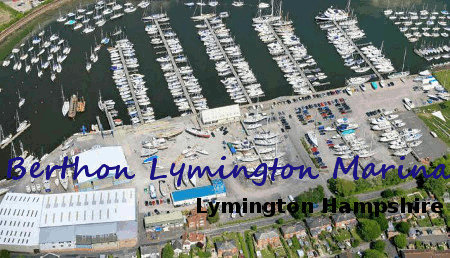Wreck and salvage laws, the role of the Receiver of the Wreck, wreck owners and salvors and how to report wreck material.
27 September 2022
There are thousands of wrecked vessels and aircraft around the UK coast. Many wreck sites are protected for their historic importance or because they are considered dangerous.
If you recover wreck material within UK territorial waters, or bring wreck material into UK territorial waters, you must report it to the Receiver of Wreck.
This guide explains the roles and responsibilities of the Receiver of Wreck and the law relating to wreck and salvage. You will also find information about the responsibilities and rights of wreck owners and salvors, and how to report wreck material. There are also contact details for organisations that can provide help, advice and information on wrecks.
Responsibilities of the Receiver of Wreck
In the UK, the Receiver of Wreck administers the Merchant Shipping Act 1995 in relation to wreck and salvage. The Receiver is appointed directly by the Secretary of State and the post of Receiver of Wreck currently sits within the Maritime and Coastguard Agency (MCA). The Receiver is responsible for processing incoming reports of wreck and ensures that the interests of both salvor and owner are taken into consideration by:
- researching and establishing who owns the wreck
- liaising with the finder and owner, and other interested parties such as archaeologists and museums
Definition of wreck
According to section 255 of the Merchant Shipping Act 1995, the definition of wreck includes "jetsam, flotsam, lagan and derelict found in or on the shores of the sea or any tidal water".
Jetsam, flotsam, lagan and derelict
Jetsam describes goods cast overboard to lighten a vessel in danger of sinking. The vessel may still perish.
Flotsam describes goods lost from a ship which has sunk or otherwise perished. Goods are recoverable because they remain afloat. Lagan describes goods cast overboard from a ship which afterwards perishes. The goods are buoyed so they can be recovered.Derelict describes property, whether vessel or cargo, which has been abandoned and deserted at sea by those who were in charge of it without any hope of recovering it.
If a boat comes off its moorings, it isn't generally classified as a wreck for the purposes of the Merchant Shipping Act 1995, as it hasn't been abandoned without hope of recovery.
Also, buoys such as data buoys and mooring buoys aren't classed as wreck. However, buoys which form part of fishing equipment may be classed as wreck when adrift.
The Receiver's remit and duties
The Receiver's remit is set down in the Merchant Shipping Act 1995, Part IX. This covers wreck from UK territorial waters, and wreck brought into the UK from outside UK territorial waters.
The Receiver's remit extends to tidal waters in the UK, so it doesn't cover lakes or rivers beyond tidal reach.
The Receiver aims to give owners the opportunity of having their property returned and to make sure a fair salvage award payment is made
where necessary. The Receiver will also recover any costs paid from the public purse during this process.
The Receiver is required to notify Lloyds of recovered property considered to be worth more than £5,000.
The duties and rights of the salvor
If you recover wreck material, you must declare it to the Receiver. Finders should report their recoveries by submitting a completed Report of wreck and salvage form within 28 days of the recovery. You should give a full description of the wreck and will usually be asked to hold recovered material to the Receiver's order.
The duties and rights of wreck owners
If you own a wreck, you must prove ownership to the satisfaction of the Receiver where wreck material has been recovered and reported. You must provide proof of ownership within one year of the material being reported. You will be entitled to have your property back as soon as you have paid any due expenses and an appropriate salvage award.
Unclaimed wreck
If wreck from UK waters remains unclaimed at the end of one year, it becomes the property of the Crown or grantee of the Crown such as the Duchy of Cornwall.
If you believe you are entitled to unclaimed wreck, you must provide evidence of entitlement to the satisfaction of the Receiver.
If wreck from UK territorial waters is unclaimed at the end of one year, the Receiver will dispose of the find on behalf of the Crown. If wreck from outside UK territorial waters is unclaimed at the end of one year, the Crown makes no claim.
Salvage awards
A salvor, acting properly under the law, is likely to be entitled to a salvage award. This salvage award cannot exceed the salved value of the recovered material.
The Receiver can arrange for independent valuations to help owners and finders agree on a fair salvage award.
Other factors are also taken into account when determining salvage awards, including:
- the measure of success obtained by the salvor
- the skills and efforts of the salvor
- the nature and degree of danger
Wreck law
The Receiver of Wreck is responsible for enforcing the Merchant Shipping Act 1995 in relation to wreck and salvage and actively monitors diving and salvage activities as well as informing and educating sea users of their responsibilities.
Some wrecks are also covered by other pieces of legislation including the Protection of Wrecks Act 1973 or the Protection of Military Remains Act 1986.
The Receiver works closely with other government departments and heritage organisations involved in matters related to wreck.
The Respect our Wrecks initiative is a PADI, BSAC and SAA initiative supported by the Receiver. It highlights the concern for sensitive and correct behaviour by all divers when visiting wreck sites. These organisations have also signed a Memorandum of Understanding to implement best practice in matters of wreck.
The law relating to wreck
In the UK, there are three main laws which apply to shipwrecks:
- Merchant Shipping Act 1995
- Protection of Wrecks Act 1973
- Protection of Military Remains Act 1986
Merchant Shipping Act 1995
Under the Merchant Shipping Act 1995, you must report to the Receiver of Wreck all wreck material recovered from UK territorial waters and any wreck material brought into the UK from outside UK territorial waters. This includes:
- wreck material found in or on the sea
- wreck material washed ashore in tidal waters
- material recovered from a wreck site - regardless of age, size or apparent importance or value
Protection of Wrecks Act 1973
Section 1 of the Protection of Wrecks Act 1973 is designed to protect wrecks which are of historic, archaeological or artistic importance. This is administered by National Heritage organisations on behalf of the Department for Culture, Media and Sport (DCMS).
When a wreck is protected under this legislation, there is a protected area around the designated site and diving is prohibited unless an appropriate licence has been issued by the relevant National Heritage Agency.
Section 2 of the Protection of Wrecks Act covers wrecks considered as being potentially dangerous and is administered by the Receiver of Wreck through the MCA.
In the interest of safety, there is a strict no-entry policy for wrecks considered dangerous because of their contents. These wrecks have a prohibited area around them.
Historic Marine Protected Areas - Scotland
Some areas in Scotland are designated as Historic Marine Protected Areas under the Marine (Scotland) Act 2010, Part 5. These areas protect nationally important shipwrecks, aircraft, man-made structures and scattered remains from submerged prehistoric landscapes. Planning permission and marine licences may be required for certain types of work and activities within Historic Marine Protected Areas.
It is a criminal offence to remove, alter or disturb marine historic assets, or to carry out activities which could damage or interfere with a marine historic asset or have a significant effect on the protected area.
This legislation is administered by Historic Environment Scotland, a link to their website can be found here
Protection of Military Remains Act 1986
The Protection of Military Remains Act 1986 deals with wrecks of both aircraft and ships, and all military aircraft is automatically protected under this legislation. This act is administered by the Ministry of Defence (MOD) - RAF for aircraft, Navy for vessels.
Under this act, vessels may be designated either as a protected place or as a controlled site. Divers may visit a protected place on a "look but don't touch" basis, however they are prohibited from visiting controlled sites.
Marine Licencing
If you intend to recover wreck material you may require a licence from the appropriate authority. Further information on how to obtain a licence and when a licence is required can be found by clicking on the relevant organisations below:
- Marine Management Organisation (England)
- Marine Scotland (Scotland)
- Natural Resources Wales (Wales)
- Department of Agriculture, Environment and Rural Affairs (Northern Ireland)
- The Crown Estate (UK)
Please note that other permissions may be required for certain activities. It is your responsibility to ensure that you have the correct permissions before you dive or recover wreck material.
The process of reporting wreck
Under the Merchant Shipping Act 1995, you must report to the Receiver of Wreck all wreck material (regardless of size or significance) recovered from within UK territorial waters - up to the 12 nautical mile limit - or recovered outside the UK and brought within UK territorial waters. Reporting wreck is a simple process. You just need to complete a Report of wreck and salvage form and send it to the Receiver of Wreck.
Wreck material can take many forms, including:
- portholes
- bells
- compasses
- fixtures and fittings
- personal belongings
- cargo material
- aircraft
- medieval pots, gold coins, cannon etc
Settlement of salvage
When you report a find - whether modern or historic material - to the Receiver, you may be entitled to a salvage award.
Settlement of ownership
When you report wreck material to the Receiver, wreck owners are given the opportunity to be reunited with their property, and the salvor may receive a salvage award.
Find out who owns wreck items
The Receiver investigates ownership of wreck items. If you find wreck, you should assume that it has an owner, for example:
- an individual
- a company or insurance company
- a dive club
- the MOD or the Department for Transport (DfT)
If an owner decides that they would like their property returned, they will first have to settle salvage with the legal finder of the material.
Historic wreck material
When material of historical or archaeological importance is reported, the Receiver may seek further advice from experts in a related field. For wreck material that is of historical or archaeological importance, the Receiver of Wreck will try to ensure that it is offered to an appropriate museum. If you find historic wreck material, your views will be taken into consideration when placing the material in a museum and you may still be entitled to a salvage award.
Fees and forms
The Receiver doesn't currently charge a fee, but will expect to recover any expenses incurred such as storage or obtaining a valuation of the salved property.
If you recover any wreck material, you'll need to complete a Report of wreck and salvage form and send it to the Receiver within 28 days of the recovery. Both you and a witness should sign a hard copy of the form before returning it to the Receiver.
Receiver of Wreck - enforcement and penalties
The Receiver of Wreck tries to ensure the fair treatment of both legal salvors and legal owners. They also expect all sea and coast users to abide by the law when recovering wreck.
The Receiver will investigate any report of possible offences regarding the treatment of wreck. If the investigation reveals sufficient evidence, the Receiver may prosecute those suspected of having committed an offence.
The Receiver may share information with other prosecuting authorities when offences come to light.
Summary of offences and penalties
Under the Merchant Shipping Act 1995, there are offences for illegal activity which carry penalties, for example:
- S.236 - failing to declare a wreck find without a reasonable excuse carries a £2,500 fine on summary conviction, plus loss of salvage rights, and payment of twice the value of the find to the person entitled to the wreck
- S.237 - concealing or keeping possession of wreck or cargo and refusing to surrender it carries a £2,500 fine on summary conviction
- S.245 - taking undeclared wreck from UK waters into a foreign port and selling it carries a maximum of five years' imprisonment on indictment
- S.246 (1) - boarding a vessel in distress without permission of master carries a £1,000 fine on summary conviction
- S.246 (3) - impeding or hindering attempts to save a vessel, concealing any wreck, defacing or obliterating any mark, and wrongfully carrying away or removing any wreck carries a £2,500 fine on summary conviction
Time limit for declaring recovered wreck material
The Receiver considers that 28 days is a reasonable time for a finder to declare wreck by completing and submitting a Report of wreck and salvage form If you recover wreck material and require more time to declare it, you can apply to the Receiver in writing, giving details of the reasons why.
However, if a find is not registered within 28 days, or a request for an extension is considered unreasonable, the Receiver may, without further notification, commence proceedings under section 236(2).
Monitoring diving activities
Where possible the Receiver monitors diving activities in conjunction with Ministry of Defence, Police, Coastguard, Diving Organisations and other interested parties, and will continue to educate all sea-users through leaflets, presentations and visits.
Protected wrecks
Around the coast of the UK there are more than 100 wreck sites designated as protected wrecks by one of three main pieces of legislation:
- Protection of Wrecks Act 1973
- Protection of Military Remains Act 1986
- Ancient Monuments & Archaeological Areas Act 1979
Section 1 of the Protection of Wrecks Act 1973
Section 1 of the Protection of Wrecks Act 1973 provides protection for designated wrecks which are deemed to be important by virtue of their historical, archaeological or artistic value. List of protected wrecks designated under Section 1 of the Protection of Wrecks Act 1973.
Diving at these sites is prohibited unless an appropriate licence has been issued by the relevant National Heritage Agency.
There are 4 levels of licence:
- visitor licence
- survey licence
- surface recovery licence
- excavation licence
The administration of Section 1 of this Act and associated licences is the responsibility of:
- Historic England in England
- Historic Scotland in Scotland
- Cadw in Wales
- Environment and Heritage Service in Northern Ireland
Section 2 of the Protection of Wrecks Act 1973
Section 2 of the Protection of Wrecks Act provides protection for wrecks that are designated as dangerous because of their contents. It is administered by the Receiver of Wreck through the MCA.
Diving on these wrecks is strictly prohibited.
The Protection of Military Remains Act 1986
The Protection of Military Remains Act 1986 makes it an offence to interfere without a licence with the wreckage of any crashed, sunken or stranded military aircraft or designated vessel. This is irrespective of loss of life or whether the loss occurred during peacetime or wartime.
You can find wrecks designated as military remains on the Legislation.gov website.
Download guidance for the recovery of crashed military aircraft (PDF, 63KB).
All crashed military aircraft receive automatic protection, but vessels must be individually designated. Wrecked vessels are protected under this Act both in UK waters and abroad.
There are two levels of protection offered by this Act, designation as a protected place or as a controlled site.
Protected places
The designation of protected places includes the remains of any aircraft which crashed while in military service or any vessel which sank or stranded in military service after 4 August 1914.
Although crashed military aircraft receive automatic status as a protected place, vessels need to be specifically designated by name. The location of the wreck does not need to be known for it to be designated as a protected place.
You are allowed to dive on an aircraft or vessel designated as a protected place, on a "look but do not touch" basis only, however it is an offence to:
- conduct unlicensed diving or salvage operations
- tamper with, damage, remove or unearth any remains
- enter any hatch or other opening
Controlled sites
Controlled sites are specifically designated areas which cover the remains of a military aircraft or a vessel sunk or stranded in military service within the last 200 years.
Within a controlled site, diving operations are prohibited unless you are authorised by a specific licence. It is also an offence to:
- conduct diving, salvage or excavation operations for the purposes of investigating or recording the remains
- tamper with, damage, move or unearth any remains
- enter any hatch or opening
Ancient Monuments and Archaeological Areas Act 1979
The Ancient Monuments and Archaeological Areas Act 1979 relates primarily to land-based sites and structures and provides for the scheduling of monuments of national importance.
In recent years, this act has also been used to provide some level of protection for underwater sites.
Once a wreck has been scheduled a maritime monument, public access to it - ie diving on the site - is permitted on a 'look but do not touch' basis. Without scheduled monument consent, it is an offence to:
- demolish
- destroy
- alter or repair
For this reason, only suitably robust sites are likely to be scheduled, such as the remains of the German High Seas Fleet at Scapa Flow. Contact the relevant National Heritage Agency for further information.
For Northern Ireland see Historic Monuments and Archaeological Objects (NI) Order 1995.
Other types of protected wrecks
There are restrictions on other wrecks not covered by the legislation above, for example by harbour authorities or by directives issued by the Secretary of State's representative for maritime salvage and intervention.
You can find the most up-to-date list of protected wrecks by contacting the appropriate authority.
Any artefact that is recovered from a protected wreck site under licence to the Secretary of State must still be reported to the Receiver of Wreck.
Contact the Receiver of Wreck and other useful contacts
The Receiver of Wreck administers wreck and salvage law across the UK to ensure that the interests of both salvor and owner are taken into consideration.
You can contact the Receiver by post at the following address:
Receiver of Wreck
Spring Place
105 Commercial Road
Southampton
SO15 1EG
You can call the Receiver of Wreck on 020 3817 2575 or email row@mcga.gov.uk
Other useful addresses
The Ministry of Defence (MOD) deals with wrecks of military vessels and aircraft. You can contact the MOD here.
The Department for Digital, Culture, Media and Sport (DCMS) work closely with the Receiver to protect wreck sites and to prevent illegal trade in items recovered from protected wreck sites.
You can contact the DCMS here.
Cadw is the historic environment service of the Welsh government. Cadw aims to protect the historic environment of Wales by working with partners and private owners. You can contact CADW here.
Historic Environment Division (DfC) is the historic environment service in Northern Ireland. The Division aims to record, protect, conserve and promote Northern Ireland's historic environment. You can find information on wrecks on the Division's Historic Environment Map Viewer
You can contact Historic Environment Division's Heritage Records and Designation Branch at the following address:
Historic Environment Division
Heritage Records and Designation Branch
Causeway Exchange
1-7 Bedford Street
Town Parks
Belfast
BT2 7EG
Or call on 028 90569701 or email:
Historicenvironmentenquiries@communities-ni.gov.uk
You can contact Historic Environment Division's marine archaeologist at the email: Marine.InfoRequests@daera-ni.gov.uk
The Historic England (HE) Archive is the public archive of Historic England. They also manage the national historic environment databases of England's buildings, sites and territorial waters. You can find information on historic wrecks here.
You can contact HE here
The Royal Commission on Historic and Ancient Monuments of Wales (RCHAMW) is the investigating body and national archive for the historic environment of Wales. It has the lead role in ensuring that Wales' archaeological, built and maritime heritage is authoritatively recorded and properly understood, and seeks to promote appreciation of this heritage nationally and internationally. You can contact the RCHAMW here.
Historic Environment Scotland (HES) is the lead public body set up to investigate, care for and promote Scotland's historic environment. You can contact HES here.
The Registry of Shipping and Seamen (RSS) is part of the Maritime and Coastguard Agency (MCA) and is responsible for the registration of all UK flagged vessels, including fishing and the Small Ships Register. They are also responsible for the issuing of discharge books, revalidation of Certificates of Competency, registration of births and deaths at sea and the issue of campaign medals. You can contact the RSS here.
The UK Hydrographic Office (UKHO) produces a global range of electronic and paper nautical charts, publications and services for the Royal Navy and international mariner. You can contact the UKHO here.
The Department for Transport (DfT) works with agencies and partners to support the transport network that helps the UK's businesses and gets people and goods travelling around the country. They plan and invest in transport infrastructure to keep the UK on the move. You can contact the DfT here.
Published 14 September 2012
Last updated 27 September 2022
 Where Captains meet Dock Owners
Where Captains meet Dock Owners










